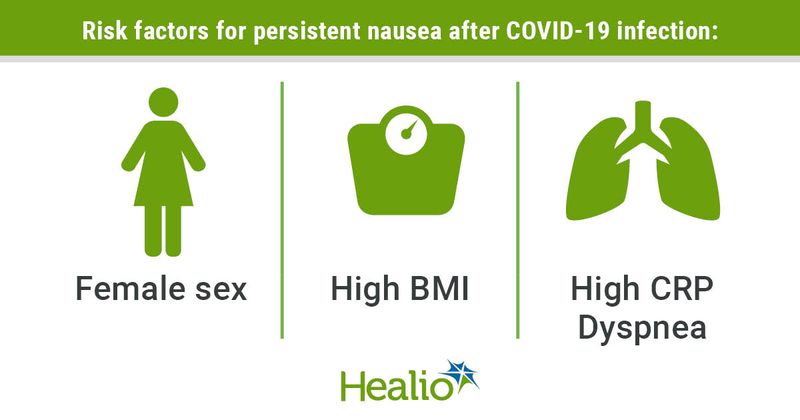COVID-19 GI symptoms not linked to mortality, but persist after hospitalization
Patients with COVID-19 infection and gastrointestinal symptoms fared as well as their controls but often battled nausea afterward, according to a presenter at UEG Week Virtual.
“Gastrointestinal symptoms occurred more frequently in hospitalized COVID-19 patients compared to the control group. COVID-19 patients complained of higher presence or intensity of nausea, diarrhea, loose stools and urgency as compared with controls,” Giovanni Marasco, MD, PhD, from the department of medical and surgical sciences at the University of Bologna, Italy, said during his presentation. “At 1-month follow-up, nausea remained markedly increased in COVID-19 patients over controls with a rate of about 80%.”

Marasco and colleagues included 2,036 patients from 36 centers across 12 countries. After exclusion of those with GI symptoms in the 6 months before enrollment and those who did not complete the questionnaires, the analysis included 871 patients (575 with COVID-19 diagnosis and 296 without COVID-19 diagnosis). Patients answered questionnaires when diagnosed and again 1 month after their diagnosis.
GI symptoms occurred more frequently in COVID-19 patients (59.7%) than in the control group (43.2%; P < .001). In the 30-day survival analysis, patients with COVID-19 who had GI symptoms had the same survival rate as those who did not have GI symptoms.
“We tried to assess the survival within COVID-19 group of patients if there were differences between patients complaining of gastrointestinal symptoms or not, as previously reported, but we didn’t find a statistically significant difference,” Marasco said.
Marasco showed that women with the presence of fever, runny nose, anosmia and headache, increased aspartate aminotransferase levels, and antibiotic intake in the 3 previous months were more likely to exhibit GI symptoms with a COVID diagnosis. Additionally, nausea was the singular symptom that persisted at 1 month; women, those with a higher BMI, C-reactive protein and dyspnea more likely to retain that persistent symptom.
“At 1-month assessment, we didn’t find significant differences between COVID-19 patients and controls for gastrointestinal symptoms persistence except for nausea, and borderline significance for ... regurgitation. These data can be explained by the ... potential for SARS-CoV-2 that can persist in the nervous system, leading to the persistence of nausea,” Marasco said. “Females with high BMI, high [C-reactive protein] and those patients who complained of dyspnea at baseline were at higher risk for nausea persistence at 1 month.”

